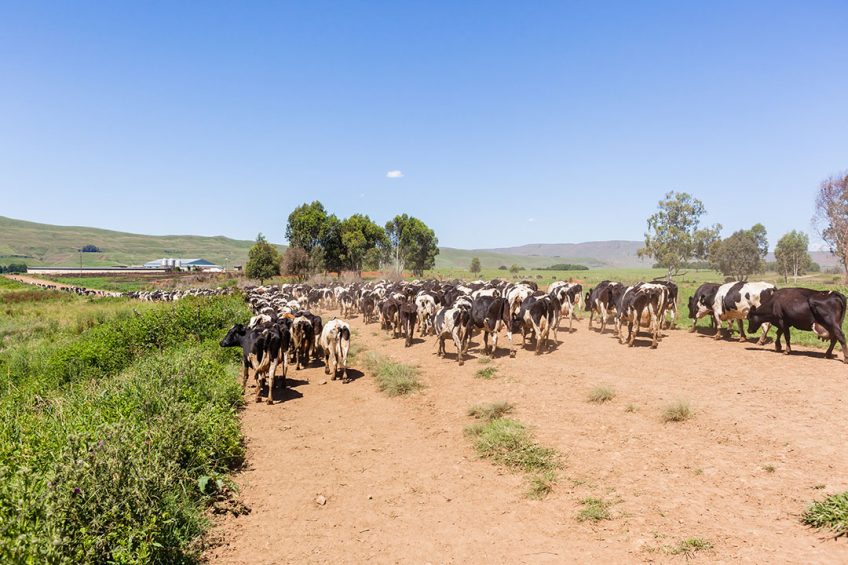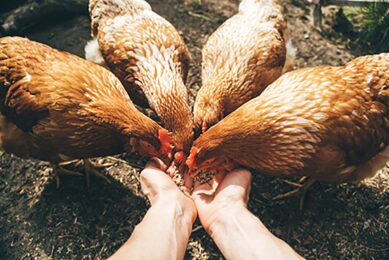Climate change: Propelling heat stress problems?

As a result of global warming, heat stress can have a negative impact on dairy cattle in several ways. Besides the reduction in milk production and high economic losses this can bring, socio-economic impacts are more pronounced in the low-income populations that mainly depend on subsistence agriculture. The effects of high ambient temperatures were earlier thought to be limited to tropical areas, but with climate change, this effect is now being experienced worldwide.
Climate change is not easy to predict, this makes it a relatively complex matter and limiting factor in the prediction and assessment of its effects. In addition, quantitative simulation studies that estimate the effect of possible future climate change are few. However, the effect of weather and extreme events on several aspects of animal production have been well documented. Studies review that climate change may adversely affect economies and global food production. Studies have also shown that, besides seasonal/climatic changes, milk loss in dairy cattle due to heat stress varies geographically, especially with dairy cattle that is mainly dependant on pasture-based systems.
Effects on dairy cattle welfare
When the temperature humidity index (THI) is higher than 72 heat stress is observed in dairy cattle. However, the threshold for heat tolerance depends on breed and milk production level —higher production levels are more sensitive to high temperatures and humidity. To reduce heat stress and to maintain homeothermy, cattle increase respiration rates, decrease feed intake, and increase water intake.
Milk production
The study of Valtorta (2002) in dairy cows subjected to heat-wave conditions associated with climate change shows a 10-14% reduction in milk production, without recovering even after conditions return to normal. Johnson et al. (1963) reviewed that milk yields decline when body temperature exceeds 38.9°C, and for each 0.55°C increase in rectal temperature, milk yield and intake of TDN declines by 1.8kg and 1.4kg, respectively. As a result of heat stress, more energy is partitioned towards the cooling down system and less for milk production.
Reproductive success
The production rate in dairy cows (especially high producing breeds) is currently a concern, as the inter-calving period tends to increase over time as production increases. This trend will probably become an even bigger problem as heat and nutritional stress increase. A summary of the effects of environmental heat stress on the welfare of dairy cattle is illustrated in Figure 1.
Figure 1 – The effects of environmental heat stress on dairy cattle welfare.

Heat stress in Africa
The definition of heat stress can be put as the sum of external forces acting on an animal, causing an increase in body temperature – resulting in a physiological response. Most studies have highlighted that this occurs when the ambient temperature exceeds 25°C, and in most cases, coupled with high humidity, low airflow and direct sunlight. This normally results in an atmosphere that has high water vapour – rendering evaporative heat loss in cattle less effective. In Africa, agriculture is still the main contributor to the GDP of most countries. FAO (2007) reported that the agricultural sector in Africa employs between 70% and 90% of the total labour force. About three quarters of milk production is based on pasture although often there are incorporations of additional concentrates, hay or silage. For dairy cattle, the effect of climate change is predicted to be more severe on pasture-based systems where an increase in temperature and a decrease in precipitation are projected.
To model the geographical impact of heat stress caused by future climate change on the milk production of Holstein dairy cattle on pasture, projections of the climate variables from the Atlas of climate change and the South African agricultural sector: A 2010 perspective (Schulze, 2010) were used in Maxent with presence-only data points of top-producing Holstein herds. Future global climate scenarios were downscaled by the Climate Systems Analysis Group at the University of Cape Town to point scale and based on the A2 emissions scenario defined by the Intergovernmental Panel on Climate Change (IPCC) Special Report on Emission Scenarios.
Firstly, the model performed well in predicting potentially suitable areas for optimal milk production. It is anticipated that potential rising temperatures caused by future climate change will have a negative impact on milk production in currently suitable milk-producing areas in South Africa. The results indicated that the predicted impact of heat stress would cause a geographical shift of optimal milk production areas towards the southern parts of the east coast.

Heat stress management strategies
From the South African study amongst others, the following main management strategies can be proposed as being instrumental in alleviating heat stress in dairy cows: the physical modification of the environment, the genetic development of less sensitive breeds, and improved nutritional management. Management approaches to reduce the effects of increased temperature may include mechanical cooling, such as forced ventilation, water sprayers and shading. However, these are difficult to apply to dairy cattle on pasture and offer limited relief only in the short term.
Where temperatures rise above the upper critical temperature, which may occur more frequently as a result of the climate change predictions, long-term viable alternatives such as changing nutrition and replacing breeds with more heat tolerant strains are necessary.
Nutritional strategies mainly focus on increasing energy density and balance the electrolytes. The logic behind the practice of feeding low fibre rations during hot weather is that greater heat production is associated with metabolism of acetate compared to propionate. Therefore, feeding more concentrate at the expense of fibrous ingredients increases ration energy density and should reduce heat increment. Electrolytes are a key element of acid-base chemistry and their supplementation during heat stress may be critical to homeostatic mechanisms. Potassium and sodium are the primary cations involved in the maintenance of acid-base chemistry.
What does the future hold in Africa?
Vulnerability to climate change depends on physical, biological and socio-economic characteristics. In most African countries, the low-income populations that depend on subsistence agriculture are particularly at high risk of being affected. The dilemma with climate change is the uncertainty surrounding it and its timeframes. It is uncertain which areas, regions and countries will be affected by the changes and to what extent. This may lead to a reluctant approach to the initiation of mitigating measures.
Livestock production in Africa and Southern Africa, especially its developing component, is vulnerable and at high risk of being severely affected by climate change. Constant research, education and sensitisation are needed in order to adapt to and combat the possible effects of climate change at a local, national and regional level. In efforts to improve heat management practices, it is of emphasis to know, and incorporate all components of animal welfare. Descriptions of production environments are therefore vital for the meaningful evaluation of performance data and comparison of performances of different genotypes. The sustainability of measures against the effects of heat stress on dairy cattle is crucial in determining the appropriate strategies.
References available on request













